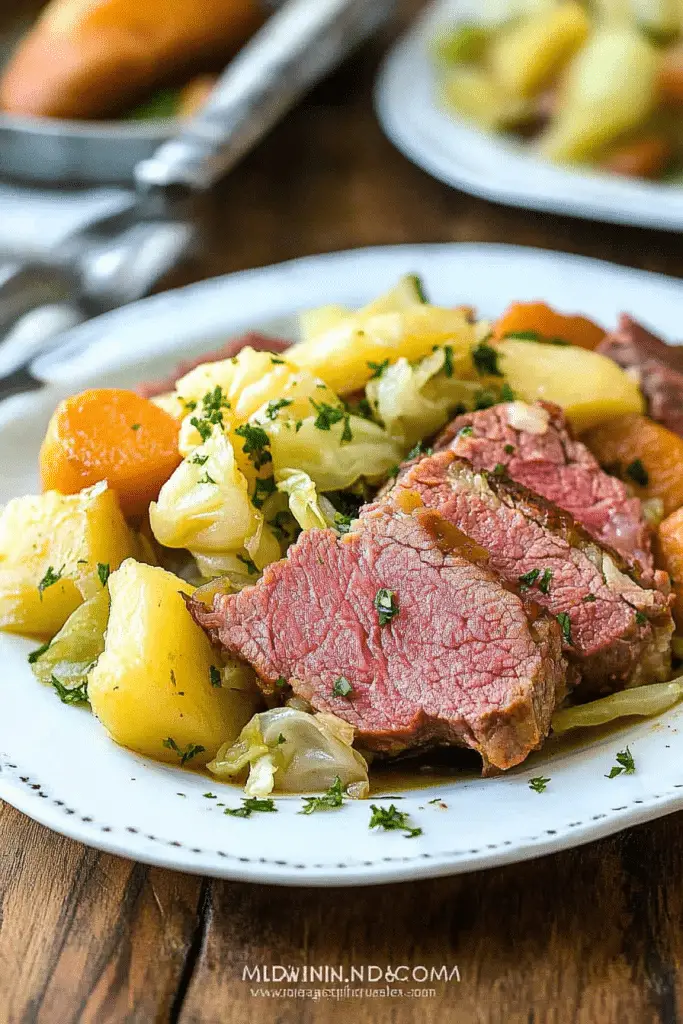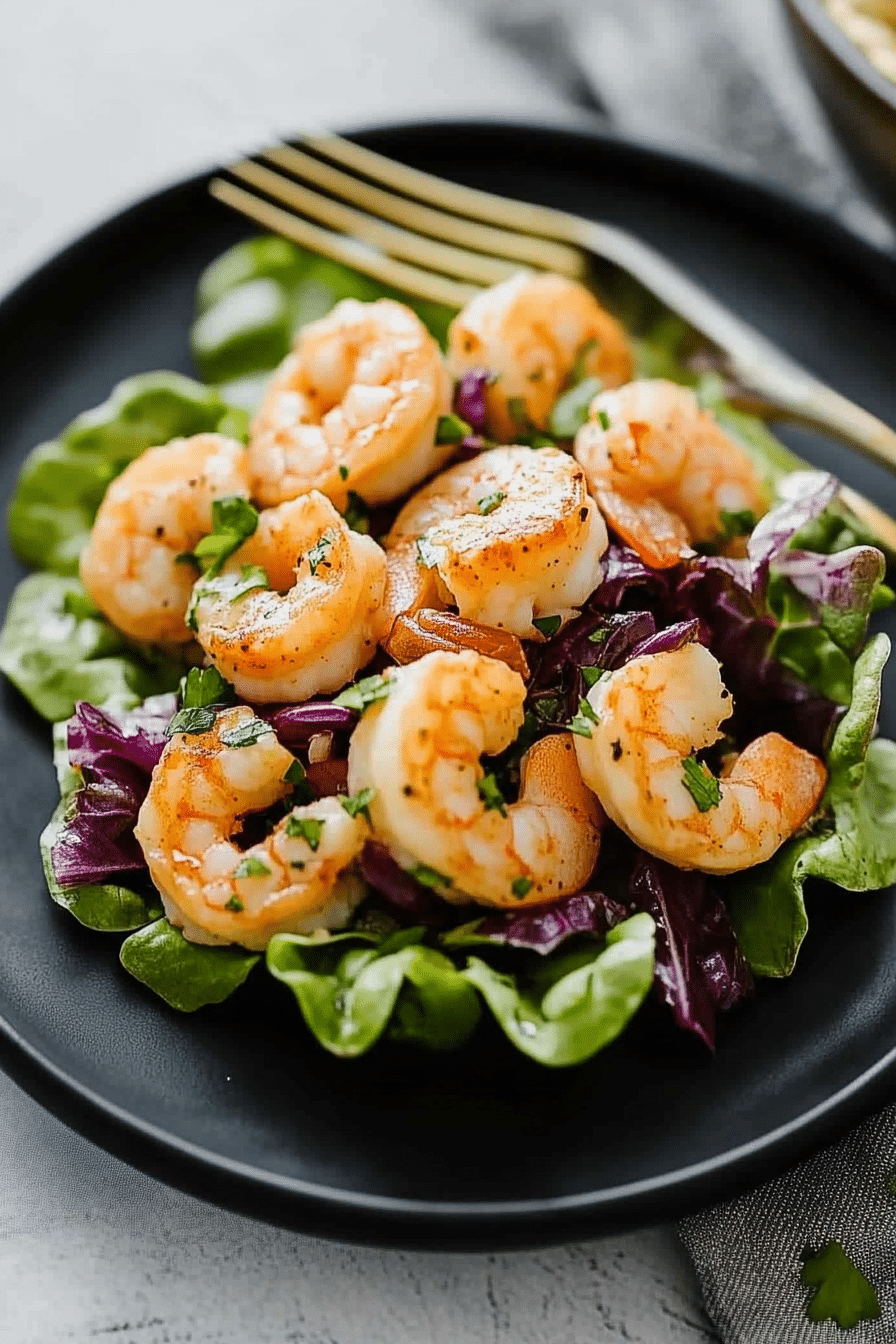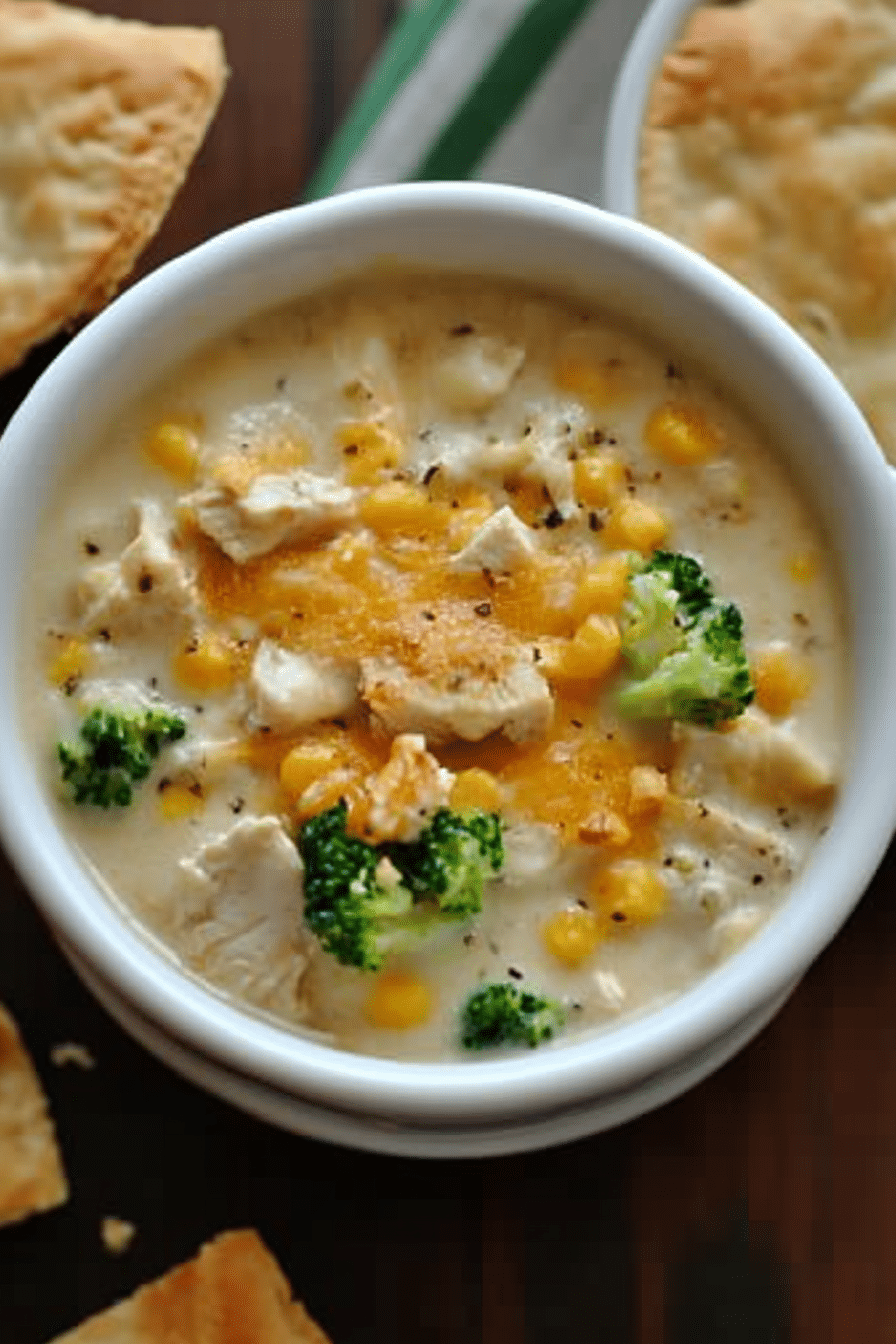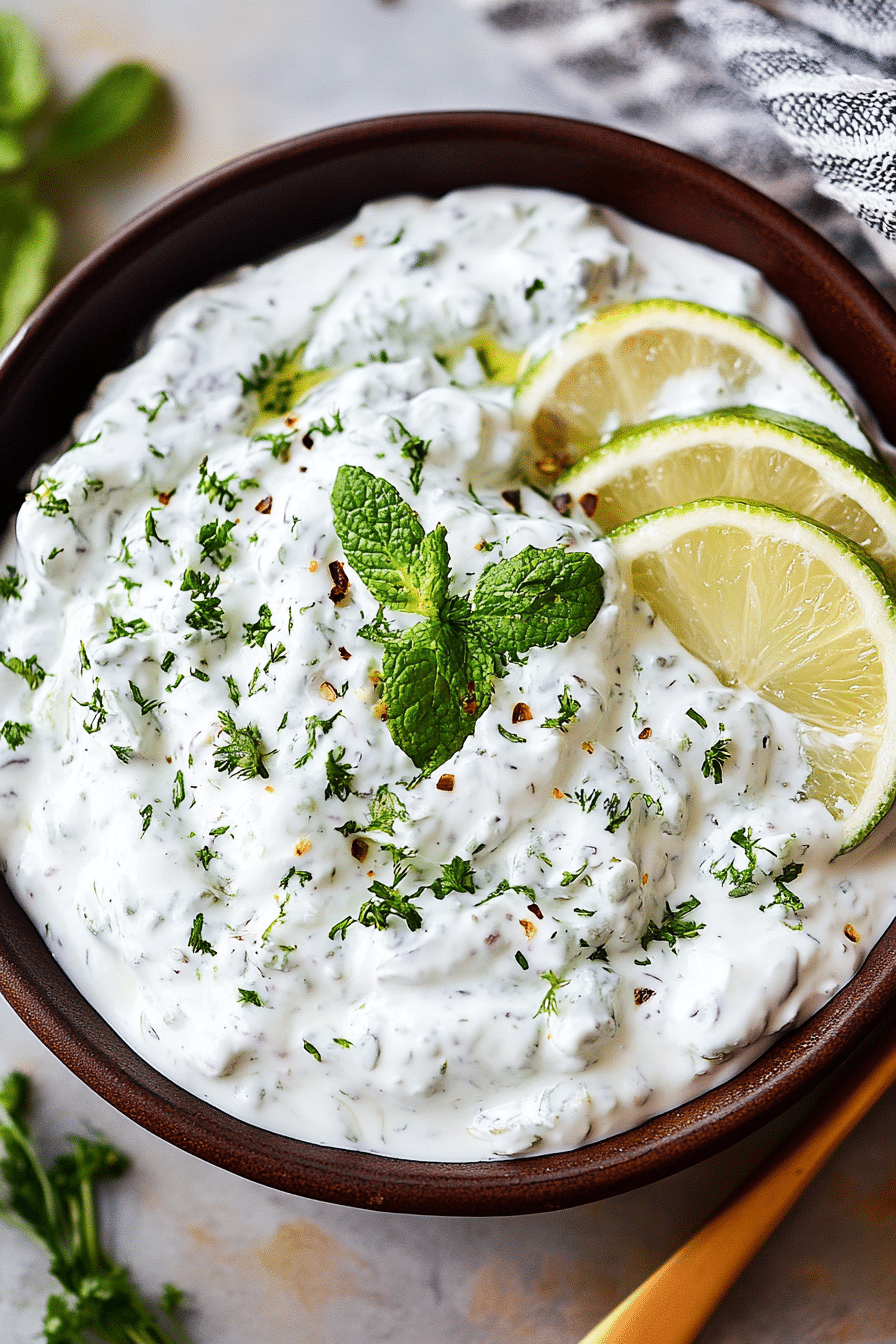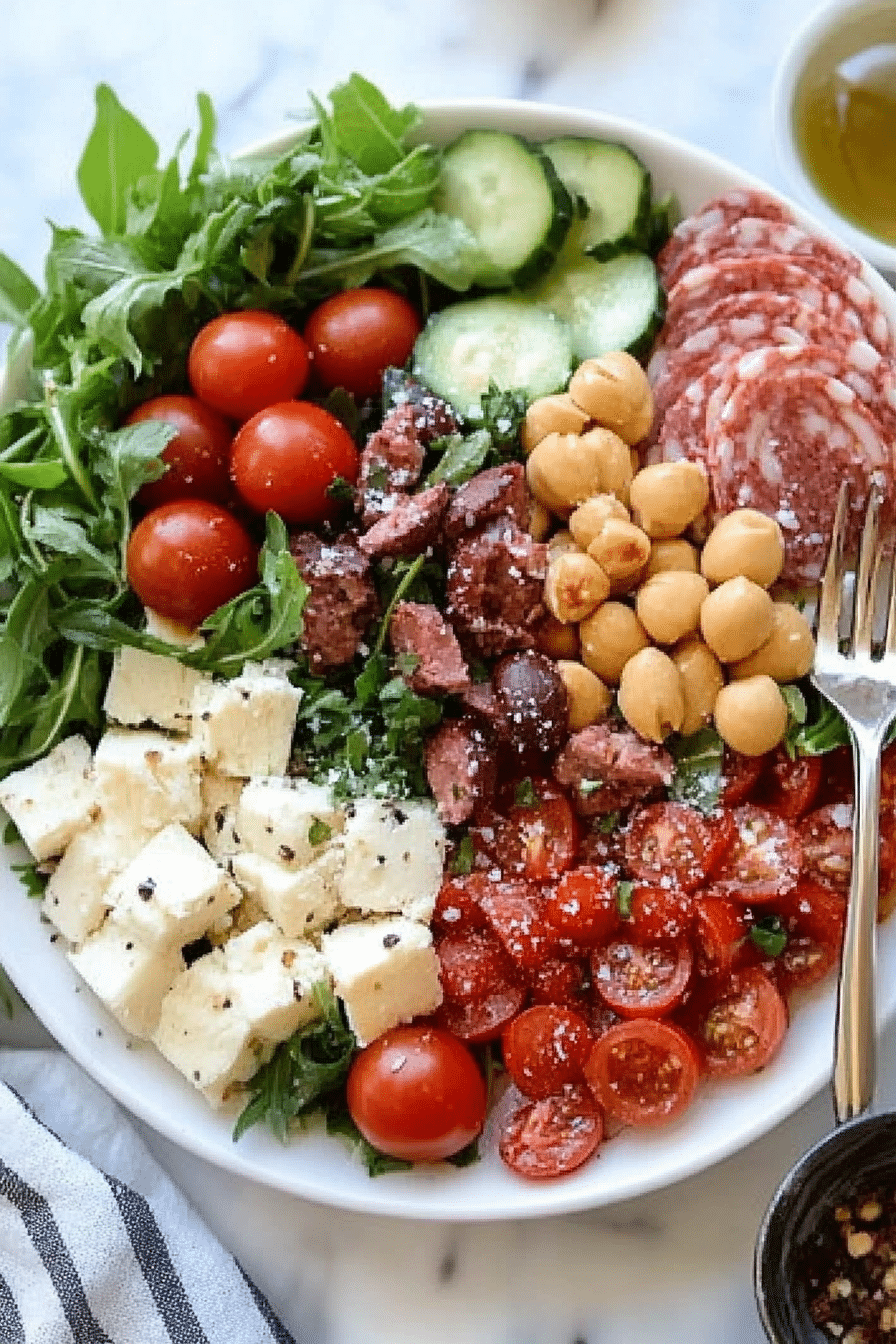Okay, let’s talk about comfort food. Real, honest-to-goodness, soul-warming comfort food. For me, that always, *always* brings me back to corned beef and cabbage. It’s not just a meal; it’s a memory. I remember growing up, especially around St. Patrick’s Day, the whole house would smell like this rich, savory aroma. My mom would make this enormous pot, and we’d all gather around, piling our plates high. It felt like the coziest thing in the world. This recipe I’m sharing with you today is my own spin on that classic, a version I’ve tweaked over the years to be just perfect. It’s way more than just boiling meat and veggies; it’s about building layers of flavor that make you want to go back for seconds (and maybe thirds!). If you’ve ever thought corned beef and cabbage was a bit… plain, stick with me. We’re about to change your mind entirely. It’s like the unsung hero of cozy dinners, and honestly, it’s surprisingly simple to make it truly spectacular.
Thank you for reading this post, don't forget to subscribe!What is corned beef and cabbage?
So, what exactly are we talking about when we say corned beef and cabbage? At its heart, it’s a dish that’s become synonymous with Irish-American culture, especially around St. Patrick’s Day, but it’s delicious any time of year! Think of it as slow-cooked, tender corned beef brisket, gently simmered with hearty vegetables like cabbage, potatoes, and carrots. The “corned” part of the name doesn’t refer to actual corn; it comes from the old English word “corn” meaning “large salt crystal.” That’s because traditionally, beef was cured in a brine made with these large salt crystals. The slow cooking process is key – it breaks down the tough connective tissues in the brisket, leaving you with incredibly tender, flavorful meat that practically melts in your mouth. The vegetables absorb all those amazing savory juices, becoming tender and infused with the beef’s essence. It’s rustic, it’s hearty, and it’s the ultimate one-pot wonder that feels like a warm hug.
Why you’ll love this recipe?
Honestly, there are so many reasons why this corned beef and cabbage recipe has become my go-to. First off, the flavor is just phenomenal. We’re not just boiling things here; we’re building a beautiful, deep savory profile. The corned beef becomes so tender and flavorful, and the vegetables soak up all that goodness. It’s the kind of meal that makes your kitchen smell incredible. Secondly, despite how fancy it can taste, it’s surprisingly simple to pull off. You don’t need any fancy culinary degrees. Most of the work is hands-off simmering time. I also love that it’s incredibly cost-effective. Corned beef brisket is usually pretty budget-friendly, and cabbage and potatoes are staples that don’t break the bank. This is a lifesaver for feeding a crowd without spending a fortune. And don’t even get me started on the versatility! While it’s amazing as is, you can use the leftovers for amazing sandwiches or hash. It truly shines on a chilly evening, but honestly, I’ve made it on sunny days too because the comfort factor is just too good to pass up. What I love most is that it feels like a complete meal all in one go – protein, veggies, starch, all perfectly cooked together. It’s the kind of recipe you can rely on, the one that always turns out right, even on those nights when you’re feeling a bit harried.
How do I make corned beef and cabbage?
Quick Overview
This recipe is all about slow and low cooking to achieve maximum tenderness and flavor. We’ll start by simmering the corned beef with aromatics to get it perfectly cooked, then add our hearty vegetables in stages so they cook just right without becoming mushy. The result is fall-apart tender beef and beautifully soft, flavorful vegetables, all bathed in a delicious, savory broth. It’s incredibly straightforward, and the aroma that fills your home as it cooks is simply divine. Trust me, this method is a game-changer!
Ingredients
For the Corned Beef & Broth: For the Corned Beef & Broth: For the Corned Beef
1 (3-4 pound) corned beef brisket, preferably flat cut
1 large yellow onion, quartered
4-6 whole cloves
2 bay leaves
1 tablespoon black peppercorns
Optional: A few sprigs of fresh parsley or thyme
“New family favorite! This corned beef cabbage was so flavorful and ridiculously easy. Crowd-pleaser for sure.”
For the Vegetables:
1.5 pounds small red or Yukon Gold potatoes, halved or quartered if large
1 pound carrots, peeled and cut into 2-inch chunks
1 large head of green cabbage, cut into 8 wedges (about 1-2 inches thick)
Step-by-Step Instructions
Step 1: Prepare the Corned Beef
First things first, we want to get that beautiful piece of corned beef ready. Most corned beef comes with a seasoning packet; definitely use that! Rinse the brisket under cold water to get rid of any excess brine. Then, place it in a large pot or Dutch oven. Add the quartered onion, whole cloves, bay leaves, and peppercorns. If you have some fresh parsley or thyme sprigs lying around, toss those in too – they add a subtle freshness that’s lovely. Now, cover everything generously with cold water. You want the meat to be fully submerged by at least an inch. Bring it all to a boil over high heat, then immediately reduce the heat to low, cover the pot, and let it simmer gently.
Step 2: Simmer the Corned Beef
This is where the magic starts to happen. We’re going to let that corned beef gently simmer for about 3 to 4 hours, or until it’s nice and tender. The exact time will depend on the thickness of your brisket. The best way to check is to pierce it with a fork; it should go in with very little resistance. While it’s simmering, I like to skim off any foam or impurities that rise to the surface in the first hour or so. It just helps to keep the broth nice and clear and the flavor pure. This slow, gentle cooking is what makes the corned beef so incredibly tender and flavorful. Don’t rush this part!
Step 3: Add the Root Vegetables
About 1 hour before you estimate the corned beef will be done, it’s time to add the heartier vegetables. Add your halved or quartered potatoes and the carrot chunks to the pot. Make sure they’re submerged in the liquid. If your liquid level has dropped too much, you can add a little more hot water to keep everything covered. Continue to simmer, covered, until the potatoes and carrots are almost fork-tender, which should take about 45 minutes to an hour.
Step 4: Add the Cabbage
Now for the star of the green show: the cabbage! Gently nestle the cabbage wedges into the pot, on top of the corned beef and other vegetables. You might need to push them down a bit. The cabbage will cook much faster than the root vegetables, so we add it in later to prevent it from getting mushy. Continue to simmer, covered, for another 25-30 minutes, or until the cabbage is tender but still has a slight bite and vibrant green color. You don’t want it to turn into sad, grey mush!
Step 5: Rest and Slice the Beef
Once everything is tender, it’s time to take out the corned beef. Carefully lift the brisket out of the pot and place it on a cutting board. Tent it loosely with foil and let it rest for about 10-15 minutes. This resting period is crucial! It allows the juices to redistribute throughout the meat, ensuring every slice is moist and tender. While the beef rests, you can skim any excess fat from the broth if you like, or just leave it for extra richness. After resting, slice the corned beef against the grain. You’ll see the grain lines in the meat; slicing perpendicular to those lines is key to tenderness.
Step 6: Serve It Up!
To serve, arrange the sliced corned beef on a platter, alongside the tender potatoes, carrots, and cabbage. Spoon some of that glorious, flavorful broth over everything. It’s truly a feast for the senses. The steam rising, the vibrant colors, and that incredible aroma… it’s a meal that just makes you feel good from the inside out.
“The corned beef cabbage turned out amazing. My kids asked for seconds. Saving this one!”
What to Serve It With
While this corned beef and cabbage is a complete meal in itself, there are always fun ways to elevate it! For breakfast, leftovers are gold! Chop up some of the corned beef and vegetables, sauté them with a little onion, and fry an egg on top. It makes for an incredible hash. Think about serving it with a side of scrambled eggs for a hearty start to the day. For brunch, you can go a bit fancier. Arrange the components artfully on a large platter, perhaps with a dollop of grainy mustard or a horseradish Cream Sauce on the side. A nice crisp cider or a light lager pairs beautifully with brunch. As a dessert, well, this isn’t really a dessert dish, but if you want something sweet *after* this hearty meal, I always lean towards something light and refreshing, like a fruit sorbet or a simple pound cake. For cozy snacks, especially if you have some leftover corned beef, make classic corned beef sandwiches! Pile thick slices onto good rye bread with mustard and maybe some sauerkraut. It’s the ultimate comfort snack. My family traditions often involve just enjoying it straight from the pot, family-style, with everyone digging in. It’s casual, it’s delicious, and it’s always a hit.
Top Tips for Perfecting Your Corned Beef and Cabbage
I’ve made this corned beef and cabbage more times than I can count, and over the years, I’ve picked up a few tricks that really make a difference. For the corned beef itself, don’t be afraid to really let it simmer. That low and slow method is non-negotiable for tender results. If you find your brisket is a little on the thin side, it might cook faster, so start checking for tenderness around the 3-hour mark. For the vegetables, timing is everything. I learned the hard way that adding everything at once means you end up with either mushy carrots or tough cabbage. Adding them in stages, as I’ve outlined, ensures everything is cooked to perfection. When it comes to the cabbage, make sure you’re using a good, firm head of green cabbage. You want those wedges to hold their shape during cooking. If you like your cabbage a little softer, feel free to add it 10 minutes earlier. One thing I always do is taste the broth before serving. If it needs a little something extra, a pinch of salt or a splash of vinegar can brighten things up beautifully. I’ve experimented with different herbs in the simmering liquid – rosemary is lovely, but I always come back to parsley and thyme for that classic flavor. For ingredient swaps, if you can’t find potatoes, parsnips are a fantastic, slightly sweeter alternative. And if you’re not a fan of cabbage, savoy cabbage or even kale can be used, though they’ll have a slightly different texture and cooking time. My biggest baking tip (though this isn’t baked!) is really about the resting time for the meat; seriously, don’t skip it! It makes all the difference between a dry piece of meat and a succulent, melt-in-your-mouth experience. And finally, don’t be afraid to embrace the richness of the broth. It’s packed with flavor and makes the whole dish sing.
Storing and Reheating Tips
This corned beef and cabbage is fantastic as leftovers, which is great because it’s usually a pretty generous meal! For storing, the best way is to let it cool down completely before packing it up. At room temperature, I wouldn’t leave it out for more than two hours, especially with the meat involved. Once cooled, you can store it in an airtight container in the refrigerator for up to 3-4 days. The flavors actually meld together even more overnight, which is pretty wonderful. If you want to freeze portions, this works really well. Place cooled corned beef and vegetables into freezer-safe containers or heavy-duty freezer bags, making sure to remove as much air as possible. It should stay good in the freezer for about 2-3 months. When it comes to reheating, there are a few options. On the stovetop is my preferred method for the best texture. You can gently warm it in a pot over low heat, adding a splash of water or some of the reserved broth to keep it moist. Microwaving is also an option, just be sure to cover it to prevent drying out, and stir halfway through. For frozen portions, thaw them in the refrigerator overnight, then reheat using the stovetop or microwave method. I usually wait to add the glaze or any finishing touches until *after* reheating, especially if I’ve stored it. The vegetables tend to hold up well, but the cabbage can get a little softer with reheating, which is just part of the charm.
Frequently Asked Questions
Final Thoughts
So there you have it – my ultimate guide to making a corned beef and cabbage that’s bursting with flavor and unbelievably tender. This dish is more than just ingredients in a pot; it’s about comfort, tradition, and the joy of sharing a hearty meal with the people you love. It’s surprisingly easy to achieve restaurant-quality results right in your own kitchen, and the aroma alone is worth the effort. I truly hope you give this a try, especially if you’ve been on the fence about corned beef and cabbage in the past. It’s become a staple in my home, and I have a feeling it might just become one in yours too. If you love cozy, flavorful, and satisfying meals, this is definitely for you. Don’t forget to experiment with your favorite herbs and maybe even a pinch of spice if you’re feeling adventurous! I can’t wait to hear how yours turns out, so please leave a comment below and share your experience, or any delicious twists you’ve added. Happy cooking!
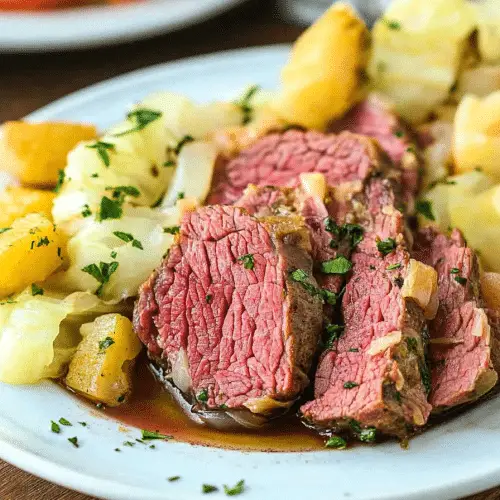
Classic Corned Beef and Cabbage
Ingredients
Main Ingredients
- 2.5 pounds corned beef brisket with seasoning packet
- 1 head cabbage cut into wedges
- 2 pounds new potatoes halved or quartered
- 0.5 pounds carrots peeled and cut into chunks
- 1 large onion quartered
- 2 cloves garlic smashed
- 1 teaspoon black peppercorns
Instructions
Preparation Steps
- Place the corned beef brisket in a large pot or Dutch oven. Add the seasoning packet that came with the corned beef. Cover with water.
- Bring the water to a boil, then reduce the heat to low, cover, and simmer for 2 hours.
- Add the potatoes, carrots, onion, and garlic to the pot. Ensure they are submerged in the liquid.
- Continue to simmer, covered, for another 30 minutes.
- Add the cabbage wedges and black peppercorns to the pot. Cover and cook for an additional 30 minutes, or until the cabbage is tender.
- Remove the corned beef from the pot and let it rest for 10 minutes before slicing against the grain. Discard the peppercorns, onion, and garlic. Serve the corned beef with the cooked vegetables.


